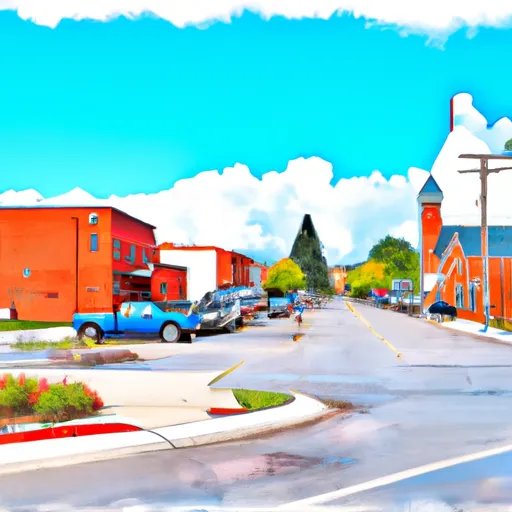°F
°F
mph
Windspeed
%
Humidity











Mazomanie is a charming village located in Dane County, Wisconsin. It experiences a humid continental climate characterized by warm summers and cold winters. Average high temperatures range from 25°F (-4°C) in winter to 85°F (29°C) in summer, while average lows range from 8°F (-13°C) in winter to 65°F (18°C) in summer. Precipitation is evenly distributed throughout the year, with an average annual rainfall of 35 inches (89 cm) and snowfall of 46 inches (117 cm).
The village is nestled near the Wisconsin River, offering a variety of hydrology constituents. The river provides opportunities for fishing, boating, and kayaking. Additionally, there are numerous lakes and ponds in the area, perfect for swimming and picnicking during the summer months.
Outdoor recreation enthusiasts can explore the beautiful landscapes surrounding Mazomanie. The village is surrounded by rolling hills, forests, and prairies, making it an ideal location for hiking, biking, and birdwatching. Nearby attractions include Black Earth Creek, Mazomanie Oak Barrens State Natural Area, and the Gibraltar Rock State Natural Area, which offers stunning views of the Wisconsin River Valley.
In summary, Mazomanie, Wisconsin offers a diverse climate, picturesque hydrology constituents, and abundant outdoor recreation opportunities for nature lovers to enjoy.
Weather Forecast
Mazomanie receives approximately 859mm of rain per year, with humidity levels near 81% and air temperatures averaging around 8°C. Mazomanie has a plant hardyness factor of 5, meaning plants and agriculture in this region thrive during a short period during spring and early summer. Most plants will die off during the colder winter months.
Regional Streamflow Levels
1,720
Cubic Feet Per Second
5
Cubic Feet Per Second
61
Cubic Feet Per Second
6,600
Cubic Feet Per Second
Nearby Camping
| Camping Area | Reservations | Toilets | Showers |
|---|---|---|---|
| DLo Water Park | |||
| Lake Columbia | |||
| Lake Ross Barnett | |||
| St. Bernard State Park | |||
| Walkiah Bluff Water Park | |||
| Lake Mike Conner |



